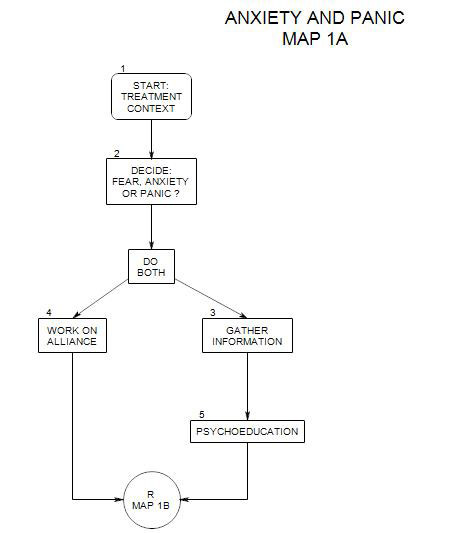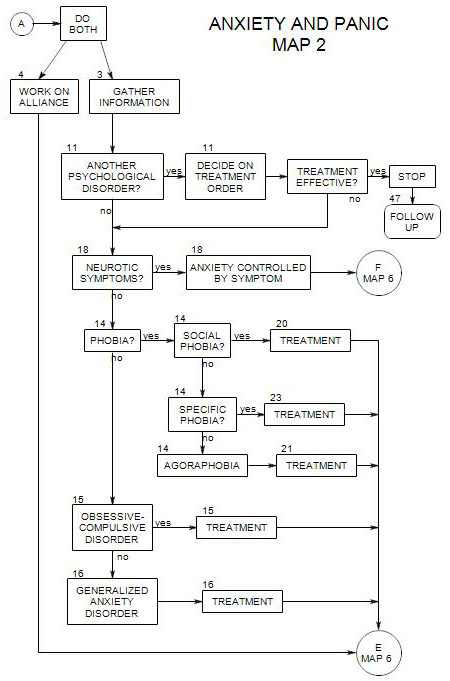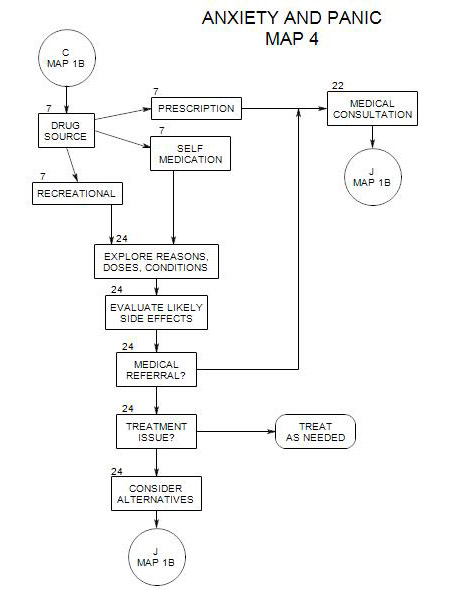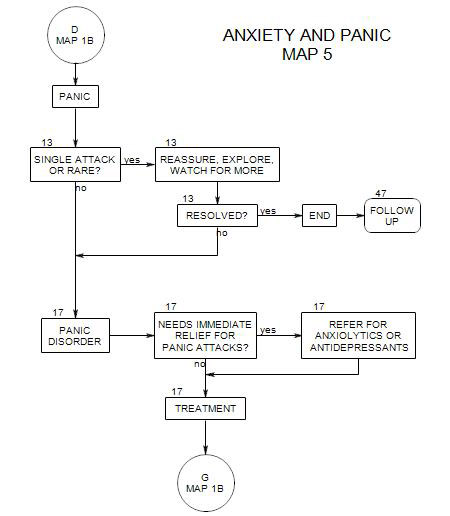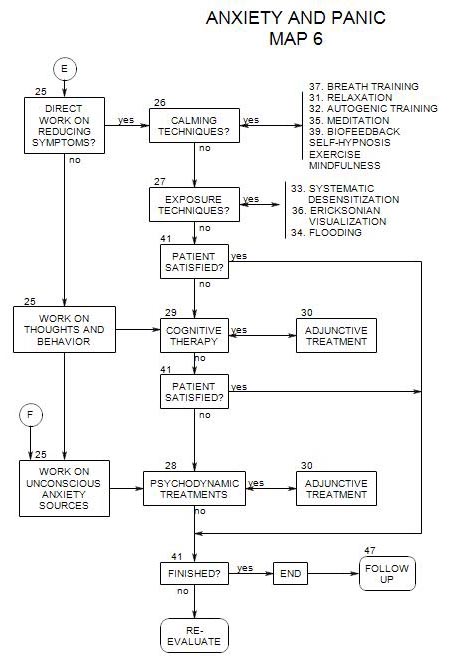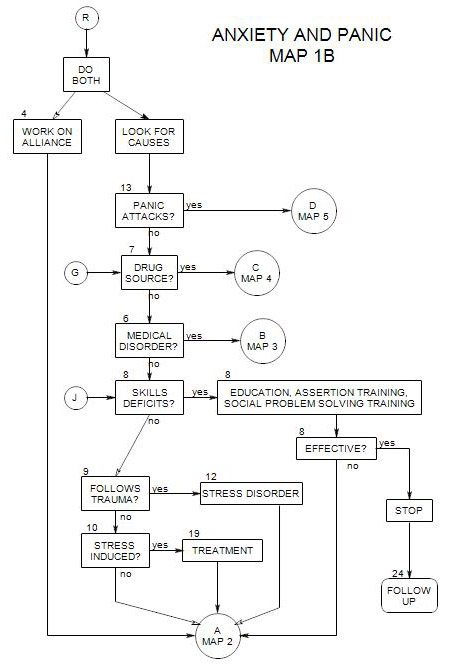
SECTIONS: 4 | 6 | 7 | 8 | 9 | 10 | 12 | 13 | 19 | 24
34. FLOODING
- Follows Section 27 on Map 6
This technique was initially a variant on systematic desensitization, in which the patient was presented with the most frightening image first and forced to stay with it until the fear abated. However, it was found that once the person’s fear to the most frightening image was extinguished, the entire hierarchy had been treated.
34a. General Principles
- Patients confront their fears directly, repeatedly and for prolonged periods, without being able to engage in previously conditioned fear responses.
- When a person confronts a situation without the usual fear reaction, the situation becomes less threatening.
- Exposure promotes both psychological and physiological habituation to the feared object or situation.
34b. Technique [Tuschen and Fiegenbaum, 1997: 39-45]
- Collect information from the patient about the objects or situations he/she fears.
- Create a hierarchy of fears, as in systematic desensitization
- Begin work with the most feared situation or object.
- Expose the patient to his/her particular anxiety-provoking situation continually until the anxiety decreases.
- Discourage or prevent everything that the patient does to try to avoid the threatening situation or object, or to leave the situation.
- The length of exposure depends on how long it takes for the anxiety to decrease.
- Repeat the procedure on successive sessions, until the anxiety is completely extinguished.
- Patients should do homework between sessions, in which they systematically expose themselves to feared situations. Therapist and patient work together to plan exposure that can be carried out successfully.
34c. Imaginal Flooding
Here you work with images or fantasies about the feared object or situation, rather than dealing with it directly. This approach has many advantages, including the ability to imagine much more extreme situations than you can actually present to the person in in vivo flooding.
If the patient is to be exposed to the most frightening image first, two things must be assured
- The patient really experiences it in its full force without leaving, physically or psychologically.
- The exposure is for sufficient time, so the person’s anxiety abates.
34d. In Vivo Flooding
Here, the person confronts his/her fears in the very situation that they typically occur. This forces him/her to re-evaluate how dangerous it is. There is no need to imagine the situation. If he/she if afraid of elevators, find an elevator and ride up and down in it.
A major problem is convincing the person to attempt this approach. Another is to get him/her to continue with it for the full session, and to return for subsequent sessions. It is often possible that the connection between the situation and the patient’s fear will strengthen, once he/she leaves the situation. It can strengthen enough that the person will avoid the next session.
Because the bulk of therapeutic work is done in a few intense sessions, patient participation in those sessions is crucial.
It is essential to achieve a successful outcome in each session. If not, the patient’s fear can potentially increase and discourage him/her from trying other ways of overcoming it.
